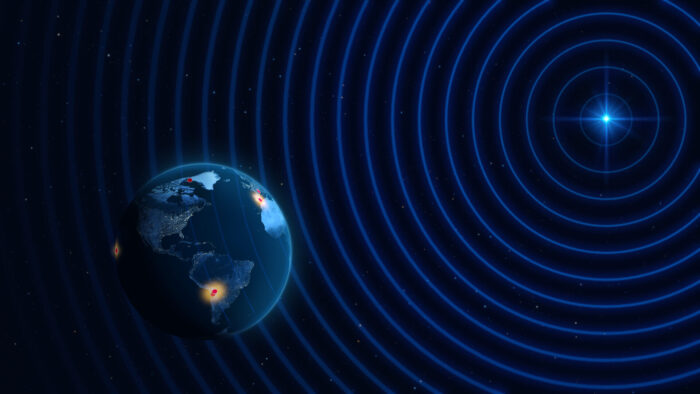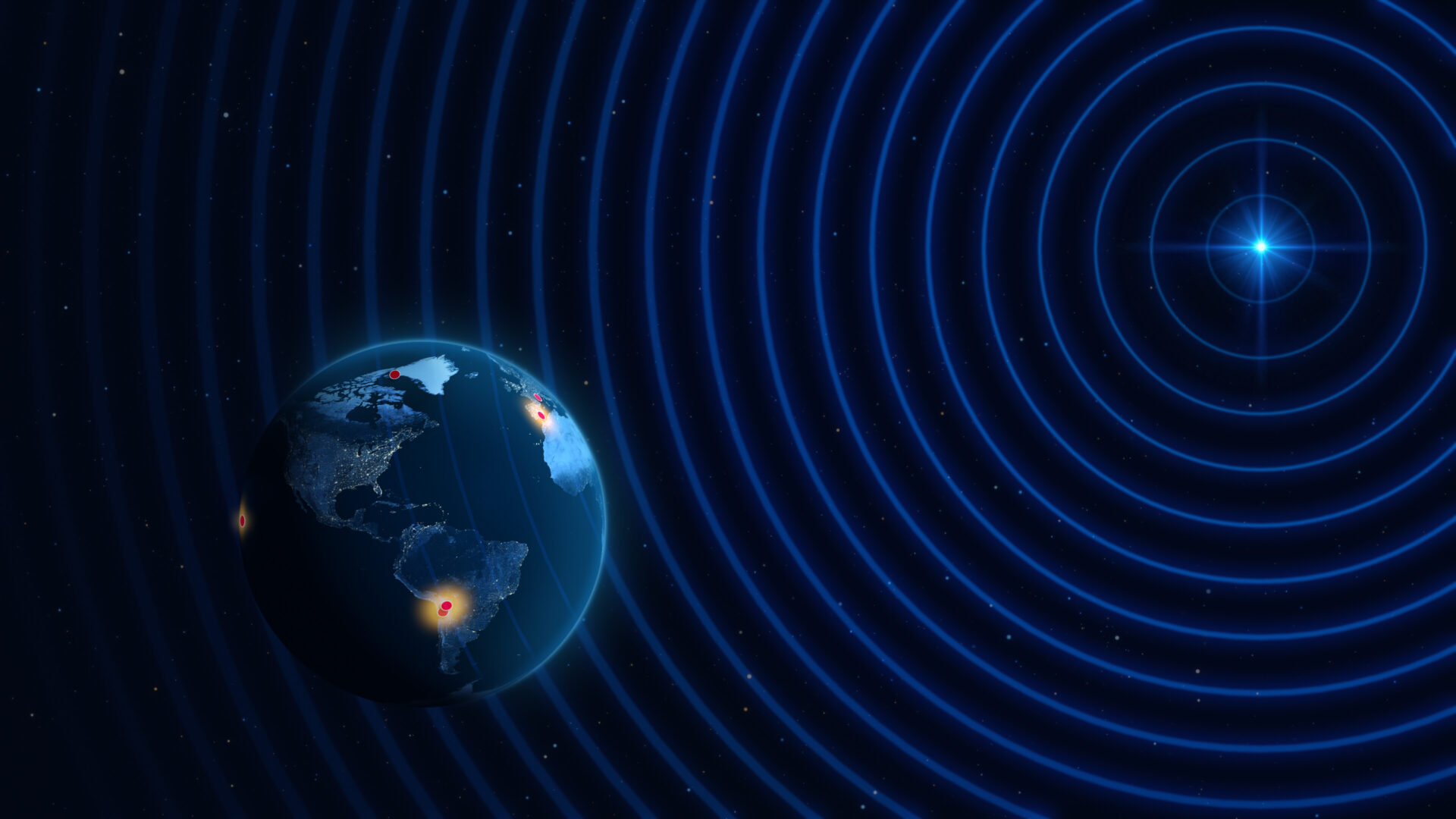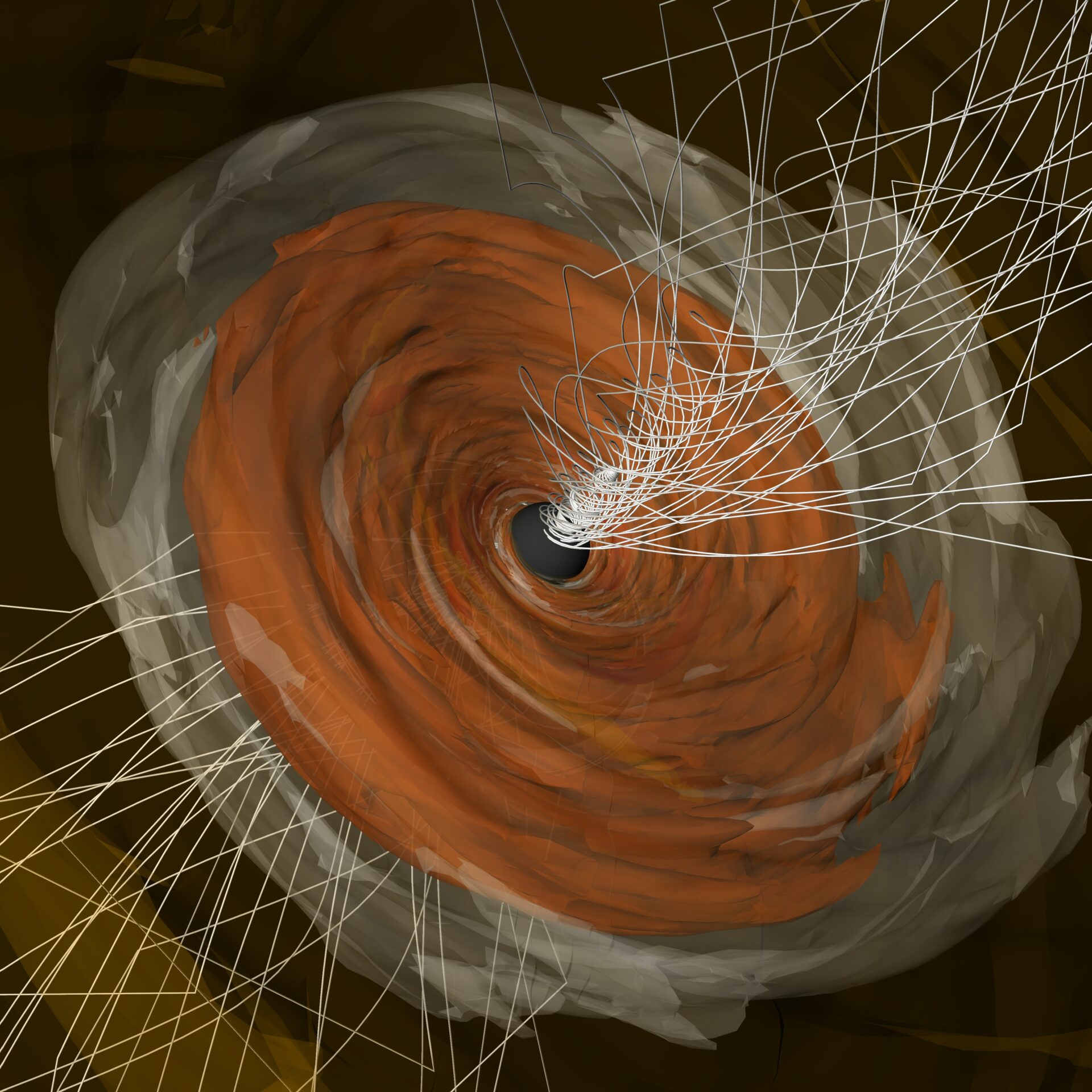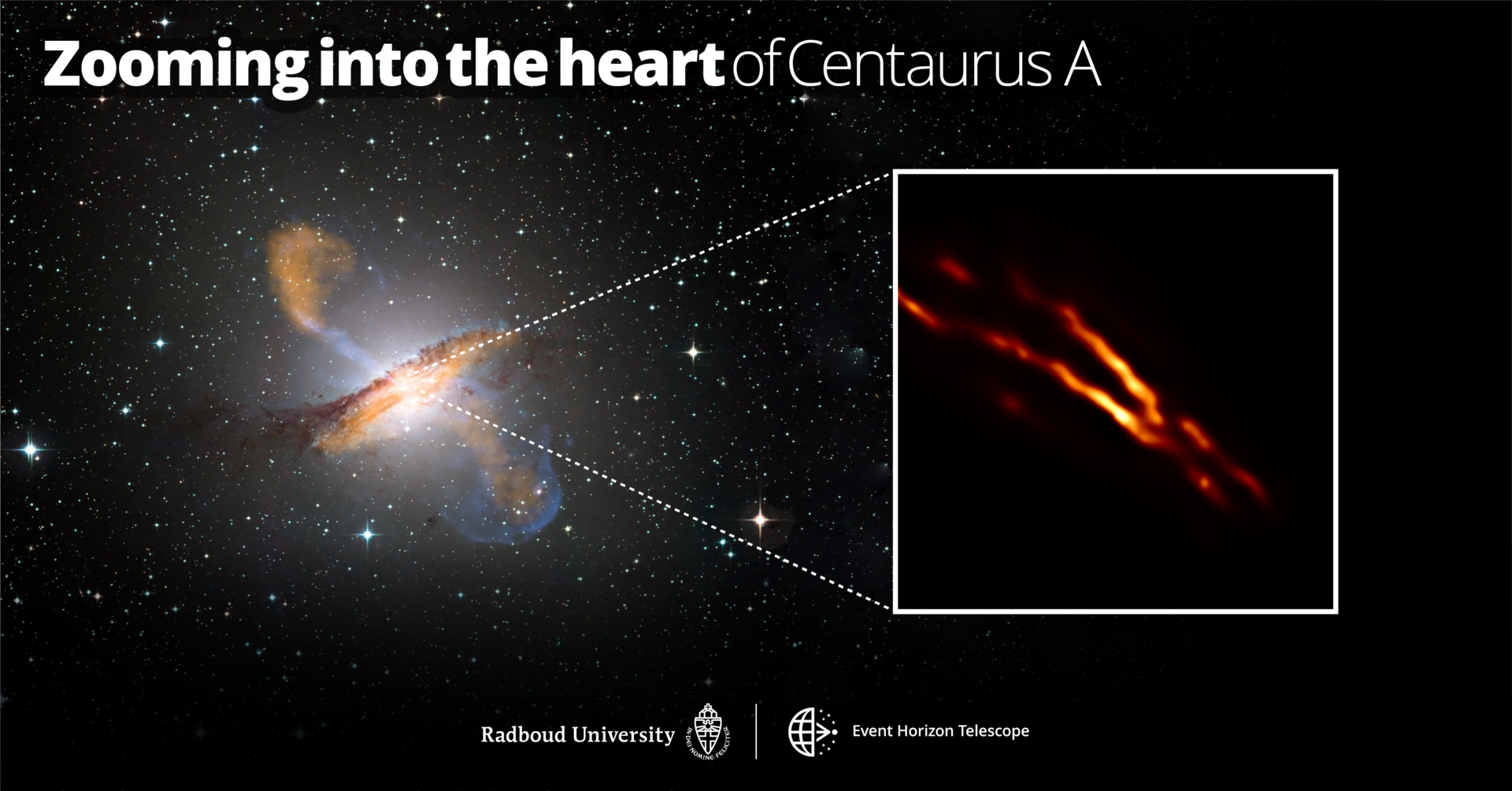EHT achieves the highest resolution yet from Earth
The Event Horizon Telescope (EHT) Collaboration has conducted test observations with the highest resolution ever obtained from the surface of the Earth. This feat was achieved by detecting light from distant galaxies at a frequency of around 345 GHz, equivalent to a wavelength of 0.87 mm. This improvement will sharpen images of supermassive black holes and allow astronomers to image more black holes than ever before. The new detections, part of a pilot experiment, were published today in The Astronomical Journal.
Starting in 2019, the EHT Collaboration released images of the supermassive black hole at the center of the M87 galaxy, and in 2022, images of Sgr A*, the black hole at the heart of our Milky Way galaxy. These were obtained by linking together multiple radio observatories across the planet, using a technique called Very Long Baseline Interferometry (VLBI), to form a single “Earth-sized” virtual telescope.
To get higher-resolution images, astronomers typically rely on bigger telescopes — or a larger separation between observatories working as part of an interferometer. However, since the EHT was already the size of the Earth, increasing the resolution of their ground-based observations called for a different approach. Another way to increase the resolution of a telescope is to observe light of a shorter wavelength — and that’s what the EHT Collaboration has now done.
To show that they could make detections at 0.87 mm, the Collaboration conducted test observations of distant, bright galaxies at this wavelength. Rather than using the full EHT array, they employed two smaller subarrays, both of which included the Atacama Large Millimeter/submillimeter Array (ALMA) and the Atacama Pathfinder EXperiment (APEX) in the Atacama Desert in Chile. Other facilities used include the IRAM 30-meter telescope in Spain and the NOrthern Extended Millimeter Array (NOEMA) in France, as well as the Greenland Telescope and the Submillimeter Array in Hawaiʻi.
In this pilot experiment, the Collaboration achieved observations with detail as fine as 19 microarcseconds, meaning they observed at the highest-ever resolution from the surface of the Earth. While previous headlines may have been made about higher-resolution observations, these combined signals from Earth and space-based telescopes. They could not obtain images yet, though: while robust detections of light from several distant galaxies were obtained, not enough antennas were used in these test observations to accurately reconstruct an image from them.
This is the first time that the VLBI technique has been successfully used at the 0.87 mm wavelength. While the ability to observe the night sky at 0.87 mm existed before the new detections, using the VLBI technique at this wavelength has always presented challenges that took time and technological advances to overcome. For example, water vapor in the atmosphere absorbs waves at 0.87 mm much more than it does at 1.3 mm, making it more difficult for radio telescopes to receive signals from black holes at shorter wavelengths. Combined with increasingly pronounced atmospheric turbulence and noise buildup at shorter wavelengths and an inability to control global weather conditions during atmospherically sensitive observations, progress to shorter wavelengths for VLBI — especially those that cross the barrier into the submillimetre regime — has been slow. But with these new detections, that’s all changed.
This technical test has opened up a new window to study black holes. With the full array, the EHT could see details as small as 14 microarcseconds, equivalent to seeing a grape on the Moon from the Earth. There is also potential to observe smaller and more distant black holes than what the Collaboration has imaged thus far.
Additional Information
This EHT Collaboration research was presented in a paper by A. W. Raymond et al. published today in The Astronomical Journal.
The EHT Collaboration involves more than 400 researchers from Africa, Asia, Europe, and North and South America, with around 270 participating in this paper. The international collaboration aims to capture the most detailed black hole images ever obtained by creating a virtual Earth-sized telescope. Supported by considerable international efforts, the EHT links existing telescopes using novel techniques — creating a fundamentally new instrument with the highest angular resolving power that has yet been achieved.
The EHT consortium consists of 13 stakeholder institutes: the Academia Sinica Institute of Astronomy and Astrophysics, the University of Arizona, the Center for Astrophysics | Harvard & Smithsonian, the University of Chicago, the East Asian Observatory, Goethe University Frankfurt, Institut de Radioastronomie Millimétrique, Large Millimeter Telescope, Max Planck Institute for Radio Astronomy, MIT Haystack Observatory, National Astronomical Observatory of Japan, Perimeter Institute for Theoretical Physics, and Radboud University.
ALMA is a partnership of ESO (representing its member states), NSF (USA), and NINS (Japan), together with NRC (Canada), NSTC and ASIAA (Taiwan), and KASI (Republic of Korea), in cooperation with the Republic of Chile. The Joint ALMA Observatory is operated by ESO, AUI/NRAO and NAOJ.
Image

Contacts
-
Nicolás Lira
Education and Public Outreach OfficerJoint ALMA Observatory, Santiago - ChilePhone: +56 2 2467 6519Cel: +56 9 9445 7726Email: [email protected]




